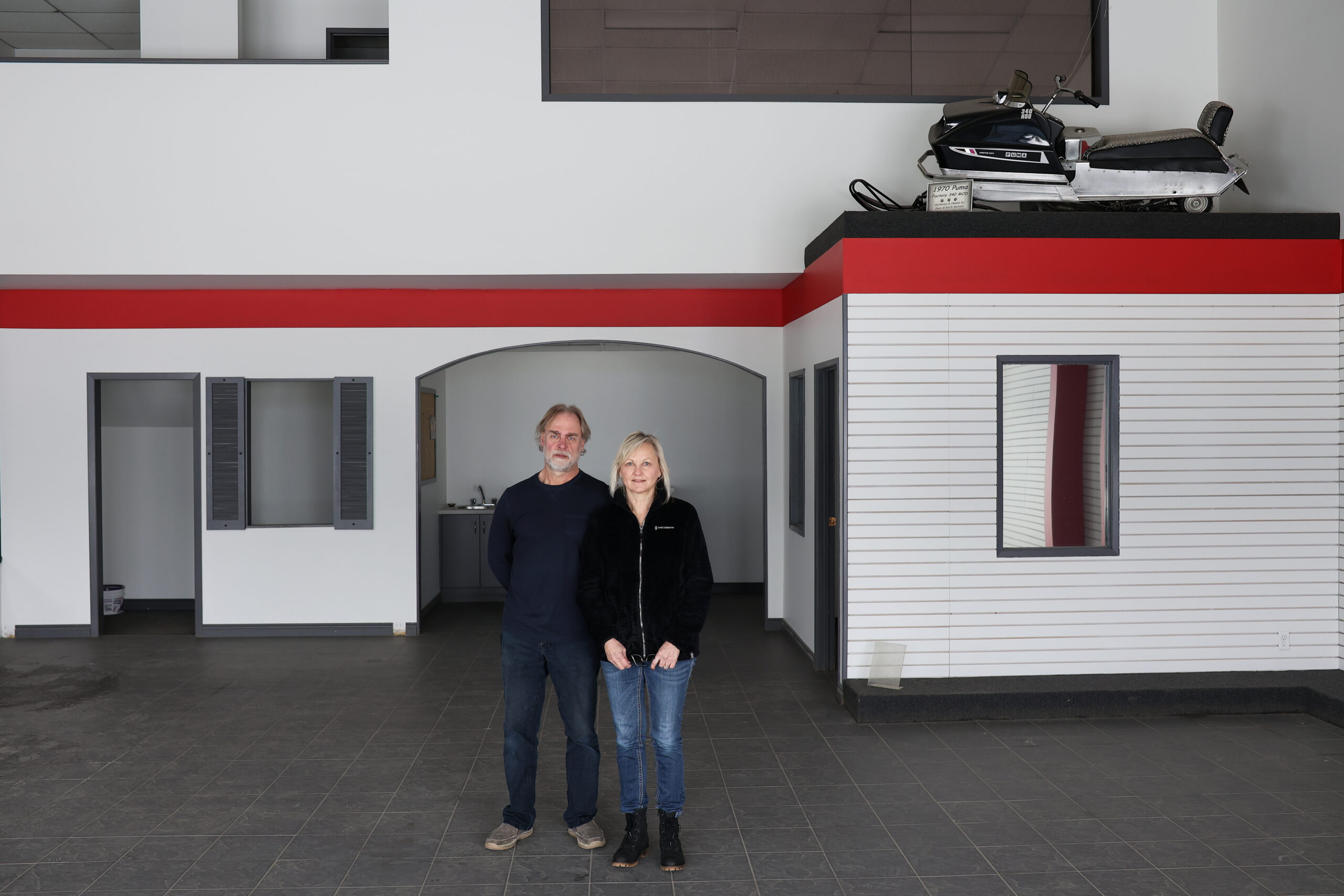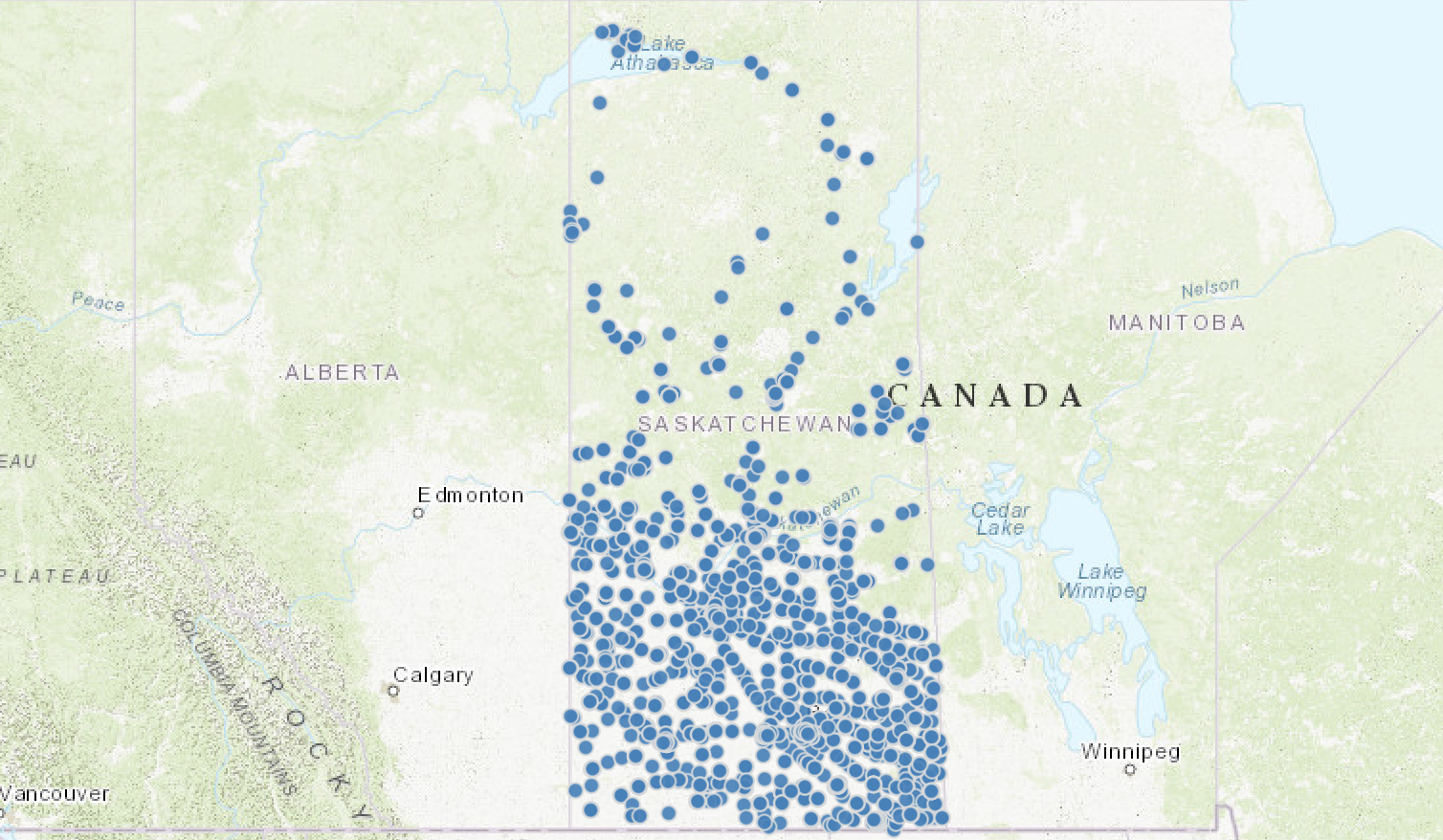
Two blank cheques: are Ontario and B.C. copying the homework?
Governments of the two provinces have eerily similar plans to give themselves new powers to...
The Saskatchewan government has identified nearly 4,500 contaminated sites, spread out across the Saskatchewan landscape. Of those, at least 220 are contaminated from fertilizer operations formerly or currently operated by energy giant Imperial Oil. Newly obtained internal documents from the Saskatchewan government reveal the Calgary-based energy company has “repeatedly failed” to notify it, or affected landowners, of contamination on some of those sites.
The information was shared in a November 2021 briefing note to then-environment minister Warren Kaeding and obtained by a Yorkton-area family fighting Imperial over land left contaminated by an adjacent fertilizer facility and shared with The Narwhal.
“The ministry has found evidence that Imperial has failed to properly report historical impacts at four separate sites,” the briefing note said. “At each site, Imperial knew of off-site impacts for many years, but did not disclose this information.”
While the briefing note mentioned specific numbers when it comes to unreported contaminated sites, it also suggested the full extent of the problem was not fully known at the time.
“Imperial has recently submitted basic status information on 220 of their sites to the ministry. This information did not disclose if known, or potential, off-site impacts exist at these sites,” it continued. “The ministry has yet to review this information, so there could be additional impacted sites that the ministry is not yet aware of.”
Land can be contaminated by everything from fertilizer plants to gas stations to oil wells and even dry-cleaners. They can pose serious health risks, make land sales or mortgages nearly impossible or cause problems on agricultural land. Without notification from the company, landowners would have no idea about the risks they face.

In response to questions from The Narwhal, the ministry confirmed there is contamination on all 220 of those sites, but said it could not provide information on how many of those sites impacted adjacent properties.
“The 220 sites include some where impacts were entirely within the property boundaries and others where there were off-site impacts,” a spokesperson for the ministry said by email.
“The ministry does not have the breakdown of the sites with and without off-site impacts readily available.”
The spokesperson did not say where those 220 sites were located or offer specifics, but did say, “given the nature of the operations,” contaminants may include “petroleum hydrocarbons, volatile organic carbons, fertilizers, polycyclic aromatic hydrocarbons and metals.”
The ministry pointed to a map of all known contaminated sites in the province, but it does not provide any information about who owns the land. The map shows a total of 4,466 locations with confirmed contamination across the province, though the province’s website notes this is “not an exhaustive list.”
One site known to be contaminated is located on the eastern edge of Yorkton, Sask.
Connie and Ward Brown, who obtained the briefing note as part of a freedom of information request, discovered the land beneath their business was contaminated when they tried to secure financing from their bank in 2016 and were told they needed a land assessment due to the fertilizer plant on the western edge of their property.
Next door to their business, Imperial Oil had previously operated a cardlock fuel station and a bulk fertilizer facility — where different agricultural fertilizers are mixed and distributed. Since 2005, the fertilizer facility has been leased and operated by Nutrien, a Saskatchewan-based fertilizer company and the third-largest producer of nitrogen in the world.
When the report from their bank-ordered land assessment arrived, it showed significant groundwater contamination from fertilizers and the bank refused to provide any financing. As a result, the Browns shuttered their business and are still fighting Imperial in court to compensate them for their devalued land. They went through a round of mediation in July with all those tied up in the lawsuit, but Connie Brown says she’s not able to provide details.

In the process of fighting with Imperial, the Browns have become adept at filling freedom of information requests, the only way they’ve been able to get information on their property. Through those requests, they obtained the environmental site assessments that government documents say Imperial failed to hand over to the couple.
Nitrate and nitrite, the most significant contaminants from the Imperial-owned land, can have serious health impacts if ingested through drinking water, particularly for infants under six months old and pregnant women. Infants can suffer from a lack of oxygen in their blood if levels of nitrogen are elevated, leading to “blue baby syndrome” — which is fatal if untreated.
Connie Brown says she was surprised when they received a heavily redacted briefing note indicating their property was just one of hundreds in Saskatchewan. She was also surprised by how forceful it was compared to a previously obtained briefing note dated April 2021.
“The wording on this one, there was no beating around the bush, it says that they have repeatedly failed to notify — the ministry has found evidence,” she says. “It wasn’t just, you know, they might have forgotten to do something.”

Almost all of the briefing note is redacted, including three options presented to the minister to “tackle this issue,” the ultimate recommendation and answers to ministry-drafted questions — including “has Imperial responded to ministry’s warnings?”
The softer-toned April briefing note said the ministry conducted an audit on all submissions related to the Brown’s file and said it showed Imperial knew contamination was spreading to nearby properties but failed to notify the ministry or adjacent landowners, including the Browns.
That also includes agricultural land to the north of the property owned by a company called Quance Park Developers, which proposed to build a new residential community on the land. When presented in 2014, the plan estimated 1,365 residents would eventually live there. Requests to speak with the company through its lawyer were not returned.
Government documents show the company met with ministry officials to discuss the contamination and indicate Imperial paid Quance Park to hire its own consultants to conduct a site assessment of its property. (The Browns were not offered similar reimbursements.)
The ministry says it contacted Imperial Oil in 2020 to ask for an inventory of its contaminated sites, which included information on the 220 locations mentioned in the briefing note. In an email, a spokesperson said, “most of which were already in the ministry’s records through the regulated process.”
It would not identify the locations of the four sites where notification was not given to “protect the privacy of potentially affected landowners.”
“Imperial Oil has indicated that they have notified potentially affected landowners as required by the Saskatchewan Environmental Code,” a spokesperson wrote in an emailed response to questions.
That represents a different tone than the briefing note raising concerns about the company’s conduct.
“Imperial Oil Ltd. has repeatedly failed to notify the ministry and affected landowners of discoveries of historical discharges at many of their fertilizer-handling facilities across Saskatchewan,” it reads.
The Saskatchewan government takes a hands-off approach when it comes to managing contaminated sites in the province and only recently launched a public database on the extent of the issue. Beyond basic information on known contaminants, location and status, specific details on individual sites — such as the extent of the contamination and cleanup plans — can only be obtained through freedom of information requests.
By Dec. 31, 2020, the government said on a contaminated sites page it had 2,712 contaminated sites in its registry. There are now 4,466 sites listed.

In 2015, the province moved from what it calls a “command and control” system of regulating contamination, to a “results-based regulatory model.”
Those responsible for contamination, or potential contamination, enter automatically into a process where the only requirement is to notify the Environment Ministry — as well as impacted landowners — of any potential concerns. Everything after that point, including monitoring and cleanup of the potential contamination, is not monitored.
The ministry says it has issued one warning of non-compliance to Imperial for failure to notify landowners and said the company has complied with its obligations. The ministry also said it had “informed” Imperial Oil of the rules requiring a company to notify landowners affected by contamination.
The Narwhal sent Imperial Oil a list of 10 questions related to the 220 sites in question, but the company did not respond to any of them. Instead, the company sent an emailed statement.
“Imperial follows a methodical, risk-based approach to reviewing former operating sites in its portfolio, with the objective of achieving regulatory closure,” Lisa Schmidt, a spokesperson for Imperial, wrote.
“The company provides status updates regarding impacted sites to the Saskatchewan Ministry of the Environment, as required under applicable law. As part of this process, Imperial will ensure that notification is provided to third parties in accordance with the Saskatchewan environmental code.”
Schmidt did not respond to follow-up questions regarding the contradiction between her statement and the minister’s briefing note. But she did say the company could not comment on the Brown property because the matter was before the courts.
The Browns launched a lawsuit against Imperial in 2018, asking the company to buy their land for its value prior to the discovery of contamination, plus costs.
Imperial Oil, in a statement of defence filed in 2018, denies any responsibility for the contamination. It has now brought in Nutrien, the operator of the fertilizer facility since 2005, as a third party and alleges Nutrien should be held liable for any contamination or costs associated with it.
Nutrien has since filed a crossclaim, pointing the finger back at Imperial Oil and arguing its agreement to operate the fertilizer facility did not include an assumption of liability. It has also now brought in previous operators of the fertilizer facility, arguing they are liable for historical contamination.

Connie Brown says she’s growing frustrated.
“We’re talking about moving to the next step,” she says. “I don’t want to be dead before this thing is settled. They want to drag it on forever, well, I’ve got stuff to do.”
That stuff could include helping others navigate a process that has occupied a significant amount of her time over the past six years. Now that she knows at least 220 properties spread across Saskatchewan are facing similar plights, she wonders if her experience can help other landowners push back.
“There’s got to be a reason for going through all of this and learning all of this information,” she says. “I don’t know what I’ll do. But I’d like to do something with it, even if it’s getting involved in a research project or something.”
Get the inside scoop on The Narwhal’s environment and climate reporting by signing up for our free newsletter. On a warm September evening nearly 15...
Continue reading
Governments of the two provinces have eerily similar plans to give themselves new powers to...

Katzie First Nation wants BC Hydro to let more water into the Fraser region's Alouette...

Premier David Eby says new legislation won’t degrade environmental protections or Indigenous Rights. Critics warn...
